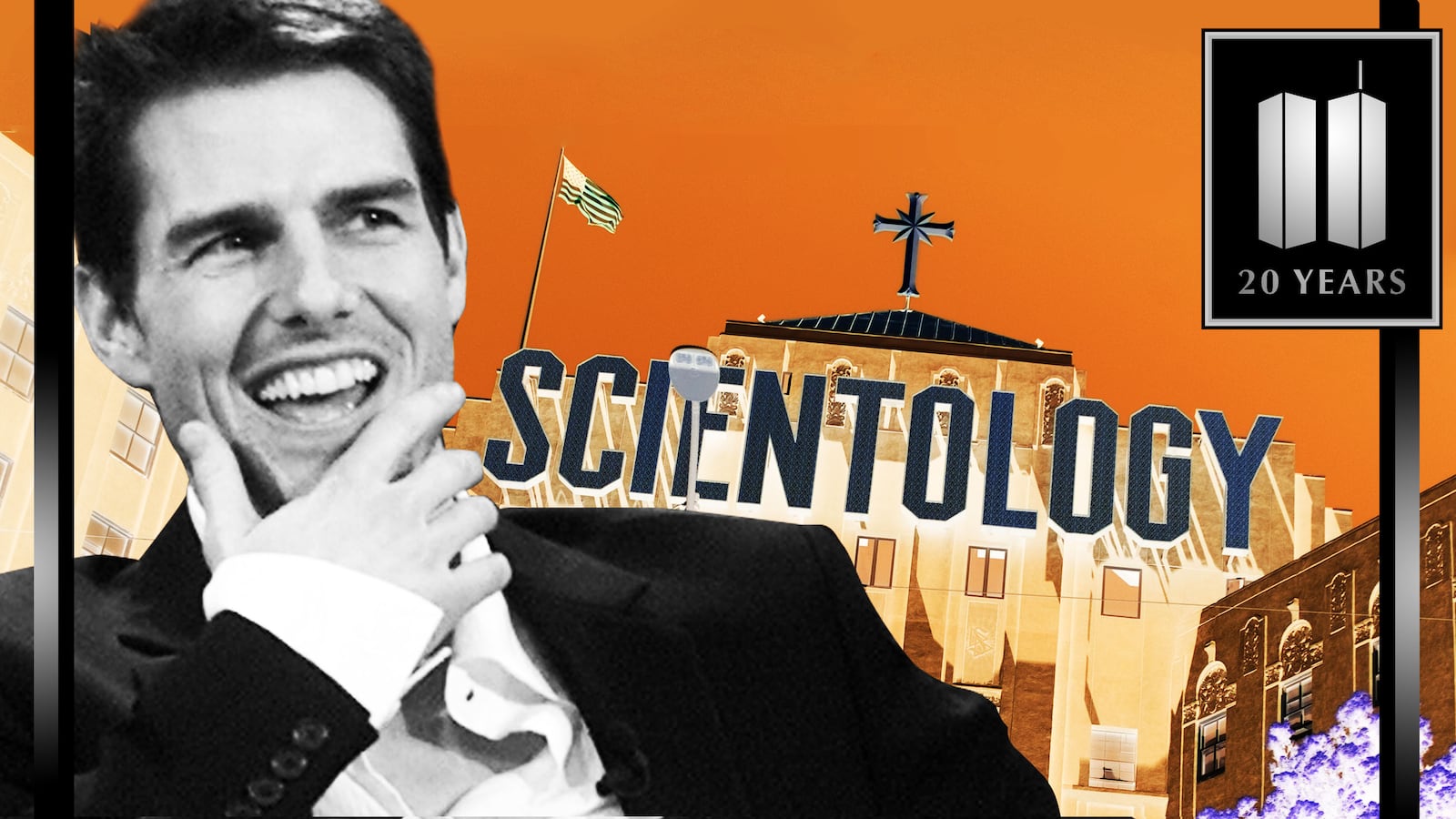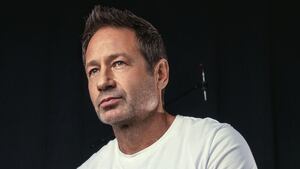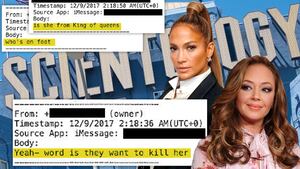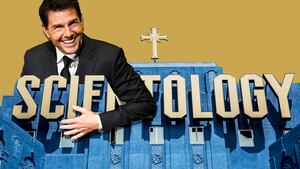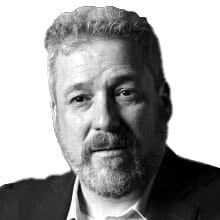On the cloudless morning of Sept. 11, 2001, there was a work crew of about 10 Sea Organization lifers chipping tar off of the roof of the seven-story Scientology building on 46th Street, a few steps away from Times Square.
One of the laborers was Bruce Hines, who had signed the Sea Org’s billion-year contract nearly 20 years before, and had risen in the ranks of Scientology’s paramilitary Sea Org so that by the early 1990s he had become an auditor (counselor) of some renown in Los Angeles. He’d been trusted to audit such church luminaries as Kirstie Alley, Nicole Kidman, and even Mary Sue Hubbard, the wife of Scientology's founder L. Ron Hubbard, who had died in 1986.
But then Hines, along with several of his co-workers, had been demoted to the Sea Org’s punishment detail, the so-called “Rehabilitation Project Force”—a humiliating program of deprivation. In a capricious organization like Scientology, it wasn’t unusual to be assigned to the RPF for almost no reason at all and to be stuck in it for years, completely cut off from the outside world and even most of the rest of Scientology. Hines found himself enduring the hardships of the RPF at the organization’s secretive international management Int Base about 90 miles east of Los Angeles.
When some of the RPFers were told they were being moved to New York, Hines, who had been in the city before, welcomed the change. Being on the RPF in Manhattan had to beat the grim experience he was going through in California.
And so, on the morning of 9/11, Hines and his fellow prisoners found themselves on the building’s roof, chipping tar off of some bricks, ostensibly to prepare it to become a new observation deck.
One sign that the RPF in New York wasn’t as harsh as it was in Los Angeles was that they were allowed to listen to a music station on a portable radio. And that’s how they first heard that the city was under attack.
“At that point, the Sea Org went into emergency mode,” Hines says today. “We were called down and went to the CLO headquarters on 48th Street. It’s between 8th and 9th Avenue.”
If the “org” on 46th Street was the public-facing front for Scientology in Manhattan, the Continental Liaison Office on 48th Street was the real headquarters of the local Sea Org and was the management hub for Scientology’s entire operation in the eastern U.S.
After working to put together some emergency protocols and then, in classic Scientology fashion, drilling on them to make sure they had them down, Hines and some of his California companions were sent to Ground Zero the next day.
Hines says the experience was surreal, and it impacted him hard. They were close enough to see the destruction, and they joined many other organizations and churches pitching in to help rescuers in their grim task.
“We were there supposedly to help the first responders, which we did do. Some of the people I was with were heartfelt, wanting to help,” Hines says. “But for the church overall, it was a PR move.”
And it was one that paid off in such a huge way, it has affected Scientology ever since.
On Sept. 20, The New York Times carried a story on page 20 about Scientology’s efforts at Ground Zero, focusing on the New York Org’s president, John Carmichael.
“At 54, Mr. Carmichael has the blond hair and blue eyes of a surfer, and the craggy face of a Mick Jagger or a Willem Dafoe,” the article said. “Though many religious organizations are supplying assistance for the disaster, few are as well-organized as the Scientologists, or as evident at the scene. When many volunteers were asked to clear out over the weekend, the Scientologists were allowed to stay, working alongside groups like the American Red Cross and the Salvation Army.”

Firefighter Gerard McGibbon, of Engine 283 in Brownsville, Brooklyn, prays after the World Trade Center buildings collapsed Sept. 11, 2001.
Mario Tama/GettyScientology leader David Miscavige was thrilled with the article, Hines says. “The New York Times publishing something positive about Scientology? It was maybe the only time they ever did it.”
Although Scientology had been sending its “Volunteer Ministers” to disasters since 1988, that single article in the Times raised the profile of the yellow-clad Scientologists to such a level that Miscavige pumped resources into it and has kept the VMs a major focus for the church ever since.
“It became a really big deal,” Hines recalls.
If Scientology saw a major PR opportunity in 9/11, the scene hit Hines in a very different way. He had spent years isolated in the Sea Org and thinking of “wogs”—Scientology’s word for non-Scientologists which has a racist origin in British English to describe non-white people—as unfeeling, robotic losers. Now, he was suddenly surrounded by them as they pitched in to aid first responders at Ground Zero. The wogs around him seemed a lot more considerate and genuine than his fellow Scientologists.
For the first time, Hines began having doubts about what he was doing with his life.
Scientology’s seizing of the World Trade Center attacks as a PR opportunity was most famously captured with the effort to deliver L. Ron Hubbard’s “detox” regimen to first responders.
The New York Rescue Workers Detoxification Project had celebrity Scientologist Tom Cruise as a co-founder and was run out of a clinic that called itself “Downtown Medical.”
Mike Rinder, Scientology’s international spokesman at the time, remembers taking Barbara Walters through the facility and not being very impressed.
“The tour of the detox place was the most underwhelming. I’d never been there and I was like, this is it? That’s all there is? A couple of guys saying they’re feeling better after doing the Purif? That’s it?”
The “Purification Rundown” was a touchstone for Scientologists since Hubbard had come up with it in 1977 and, he told followers, he had expected to be given the Nobel Prize for it.
Hubbard theorized (with no research to back it up) that the human body stored drugs and other toxins in human cells that could then be “restimulated” in flashbacks even years later. With the regimen he had devised—increased intake of niacin and other vitamins to extreme levels while undergoing sauna treatments for hours a day over the course of a month or longer—those toxins, he reasoned, could be leached out of the body in sweat. And the process would not only cleanse the body but also the “thetan,” Scientology’s term for the immortal soul that has lived for trillions of years in countless lifetimes. (Scientology rarely mentions that last part to the public.)
But as Rinder points out, even if there’s no science behind Hubbard’s theories about drugs stored in fatty tissue or flashbacks happening years later, first responders were getting some exercise, time in a sauna, and were being pampered by attentive Scientologists.
“I don’t know that there is any scientific proof that the Purification Rundown did anything for anybody. But that doesn’t mean that someone reaching out and saying, ‘We want to help you,’ and being there and talking to someone and treating them kindly didn’t help,” he says. “It was one of those perfect PR positionings. How can anyone attack that? I’m just trying to help the first responders.”
And Cruise’s involvement came at a perfect time both for the Top Gun actor and Scientology.
Cruise had first been brought into Scientology in 1986 when he began dating actress Mimi Rogers, who had grown up in the organization. Soon Cruise was hooked, and the couple was married in 1987 on one of the holiest days on the Scientology calendar: May 9, also known as Dianetics Day, the anniversary of the 1950 publication of the book by Hubbard that had started the movement.

Tom Cruise speaks during the inauguration of the Church of Scientology in Madrid, Spain, on Sept. 18, 2004.
Pierre-Philippe Marcou/AFP/GettyUnder pressure by the church, Rogers agreed to split with Cruise three years later after he had fallen for Kidman, his co-star on the movie Days of Thunder. Kidman initially embraced Scientology (and was audited by Hines), but then soured on it, and in 1992 she pulled away from the church and took Cruise with her. For the next eight years, until his 2000 breakup with Kidman, Cruise was largely separated from Scientology, and Rinder has described how much it bothered Miscavige.
After the split with Kidman, getting Cruise back in the fold became Miscavige’s obsession, Rinder and other former executives say, and the actor was subjected to intense auditing over the next few years.
By 2003, Cruise was beginning to hunger for ways to channel his revived gung-ho interest in the church. That July, he helped open a new headquarters in Missouri for Scientology’s front group, Applied Scholastics, that tries to get school districts to accept L. Ron Hubbard’s education materials. And in the fall of 2003, stories began appearing about Cruise helping to open the Downtown Medical Center for 9/11 first responders, and press reports talked about how “controversial” it was that the clinic was using “concepts” of L. Ron Hubbard while being careful not to call it an outright arm of the church itself.
We asked Rinder if there was any doubt that the facility was a project of Scientology.
“Of course not. Was this Scientology trying to take advantage of a tragedy? Of course it was. Just like the earthquake in Haiti,” Rinder says, referring to the 2010 quake which became the focus of a major Scientology operation, including John Travolta using his personal jet to fly supplies in. “Everything is an opportunity for a photo and a PR pitch. And let’s not forget, an opportunity for fundraising,” Rinder adds.
Not to mention major press attention. “Barbara Walters was a very nice person. Very smart. ‘Oh, that’s nice’—that’s about all she said about the detox center when I took her through it. She was trying to be appropriate, given that she was planning to do an interview with Tom, you know what I mean? She wasn’t asking hard questions. I had no clue what she actually thought about it or the New York Org. And I don’t think she would have said what she thought about it.”
While Cruise was the celebrity face of the detox project, it was actually run by another Scientologist, Jim Woodworth, who had a compelling story about using the Purif to beat a drug addiction a decade earlier.
“I’m not here converting these men and women to Scientology. And I’ve got to tell you something—I’ve been a Scientologist 20 years. In Sacramento I, more than any other Scientologist, got new people into Scientology, me personally. I’m very good at converting people, if I want to,” Woodworth told John DeSio for a definitive 2007 story about the Detox Project for the New York Press which focused on support the project was receiving from some local politicians, as well as government funding. “My purpose here is the purpose that I stated, to restore the quality of life to the rescue workers. It’s not a religious purpose,” Woodworth added.
DeSio, like other reporters, had no problem finding firefighters and police who backed up Woodworth’s statements and said the sauna regimen made them feel better and that they hadn’t been subjected to Scientology proselytizing.
“Twenty-six days later, I was a different person—not just physically but mentally. No bullshit,” retired NYPD lieutenant Steve Mona told DeSio, attesting to better sleep and a more positive outlook on life in general for the 2007 article.
By then, however, the Purif had come under new scrutiny when, in 2004, it was subjected to a scientific review at the request of the California public school system, as DeSio describes:
<p>While the New York version of the purification rundown gets some government funding, [Scientology’s drug rehab network] Narconon, which uses virtually the same detoxification procedure as Downtown Medical, couldn’t give their program away in California. Narconon had offered drug counseling and rehabilitation programs to California’s public schools free of charge since at least 1991, and had eventually presented the program to 39 school districts across the state. In 2004, when criticism of both Narconon and its connections to Scientology began to intensify, the San Francisco school district turned to an independent party, the San Francisco Medical Society, to evaluate the merits of Narconon. Those merits could not be found.In a September 2004 letter to school district officials Steve Heilig, director of health and education for the San Francisco Medical Society, confirmed what critics had been alleging for years: Narconon is not science. In his letter, Heilig wrote that he and five others who evaluated the Narconon curriculum found it “often exemplifies the outdated, non-evidence-based and sometimes factually inaccurate approach, which has not served students well for decades.”Heilig’s letter set in motion a chain of events, and by February 2005 California’s education department recommended that all public schools reject Narconon as unscientific, a claim that was unanimously backed the next month by the California Medical Association.</p>
Five years after his 2007 interview with DeSio, Woodworth had moved his operation to Louisiana, where a new disaster—and a new Scientology celebrity—was beckoning.
In 2012, the Gulf Coast was still recovering from the 2010 BP oil spill, and Woodworth, this time with That ’70s Show actor-Scientologist Danny Masterson, was offering to treat cleanup workers with the Purification Rundown.
“I’m very proud of what we do and L. Ron Hubbard is the author and humanitarian who developed the process,” Woodworth told a Baton Rouge NPR station. Masterson, meanwhile, helped with fundraising efforts in the same way that Cruise had nine years earlier.
We looked for Woodworth today and found that he’s still in Louisiana, where he’s CEO of Mold Zero Baton Rouge, an environmental cleanup franchise that was originally founded in Los Angeles by Danny Masterson’s stepfather, Robert “Rusty” Tweed, who the SEC banned for life from trading securities in 2017 after accusing him of running a Ponzi scheme. Danny Masterson himself is facing 45 years to life in prison if he’s convicted of raping three women in a trial that’s scheduled for February.
Woodworth didn’t respond to our request to ask him to look back at his New York and Louisiana detox centers; the Church of Scientology and Tom Cruise did not respond to a request for comment.
Like the New York clinic, the Gulf Coast Detoxification Program generated some press about its connection to Scientology, and lasted for only a limited time.
The New York Rescue Workers Detoxification Project rocketed back into the press in November 2015, however, when The Smoking Gun revealed that presidential hopeful Donald Trump’s charity arm, the Donald J. Trump Foundation, had apparently made only a single donation to a cause related to 9/11.
Of all the ways that New Yorkers had given to charities helping in the wake of the attacks, Trump’s outfit had made only a paltry $1,000 donation, and it was to the Tom Cruise detox clinic and its Purification Rundown.
We tend to think that Trump, if he personally directed the donation to be made, was more likely to have been starstruck by Cruise than interested in Hubbard’s detox process. Once Trump was elected president in 2016, Scientology made numerous efforts to get close to him through such figures as singer Joy Villa and some wealthy Florida donors, but we’ve never found any evidence that Trump himself has any interest in Scientology. (For one thing, being a Scientologist requires a ton of reading, which is reportedly not Trump’s bag.)
In the days and weeks after his experience at Ground Zero, Hines says he couldn’t shake the impressions that had been made on him by the other New Yorkers pitching in to help.
“We were taught that wogs were basically deluded, and that they were deluded by trillion-year-old implants. But I saw how well they were operating, how kind they were to everyone, and to us. And how much more genuine they were than what we were doing,” he says.
“It was a stark comparison for me. I had been led to believe this after all these years of indoctrination—I had been in for 23 years—and I was never around these people. Here was a time when I actually saw these people and how they were. It didn’t add up.
“I thought about it over the next year as I became more unsatisfied, and then I decided to leave. I actually left Scientology from New York.”
Being careful not to be seen by his fellow Sea Org workers, Bruce Hines carefully packed a bag and made for the Port Authority to take a bus.
He’s never looked back.
